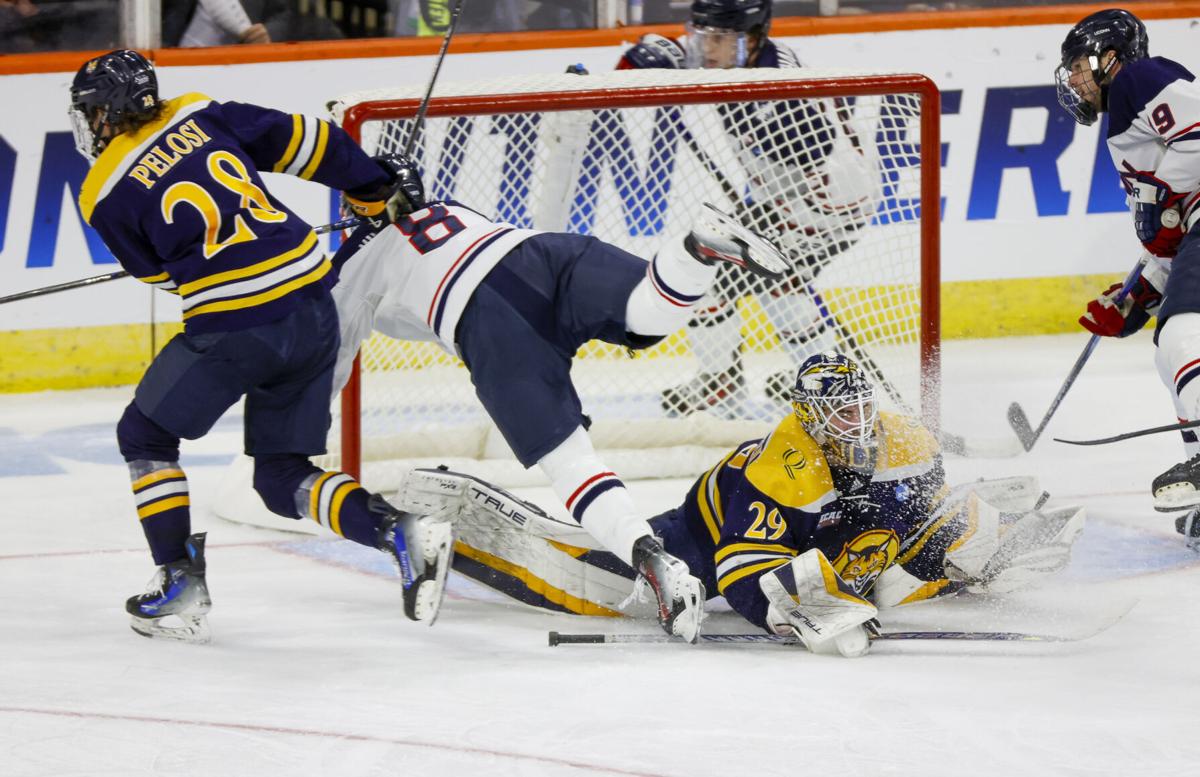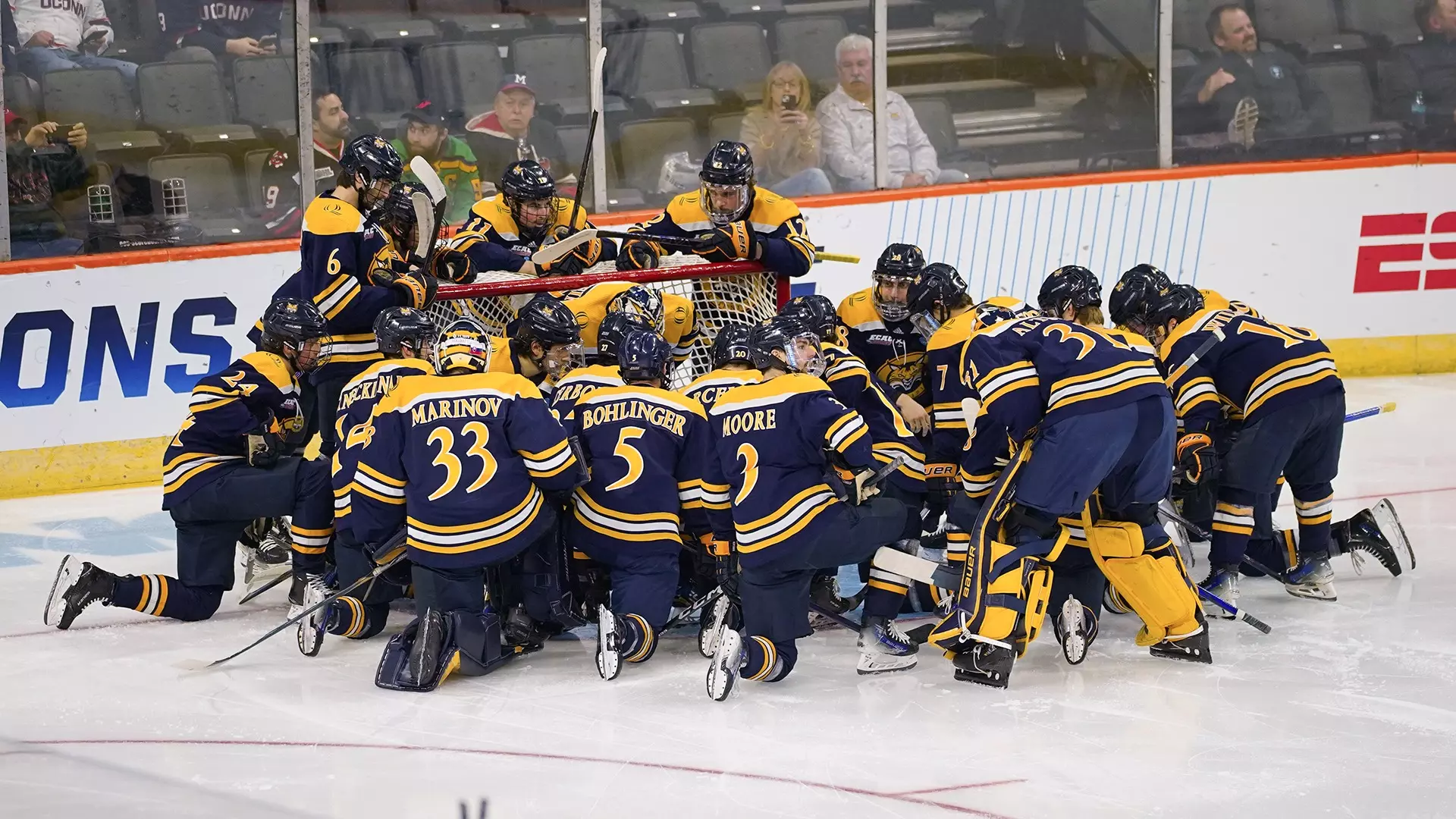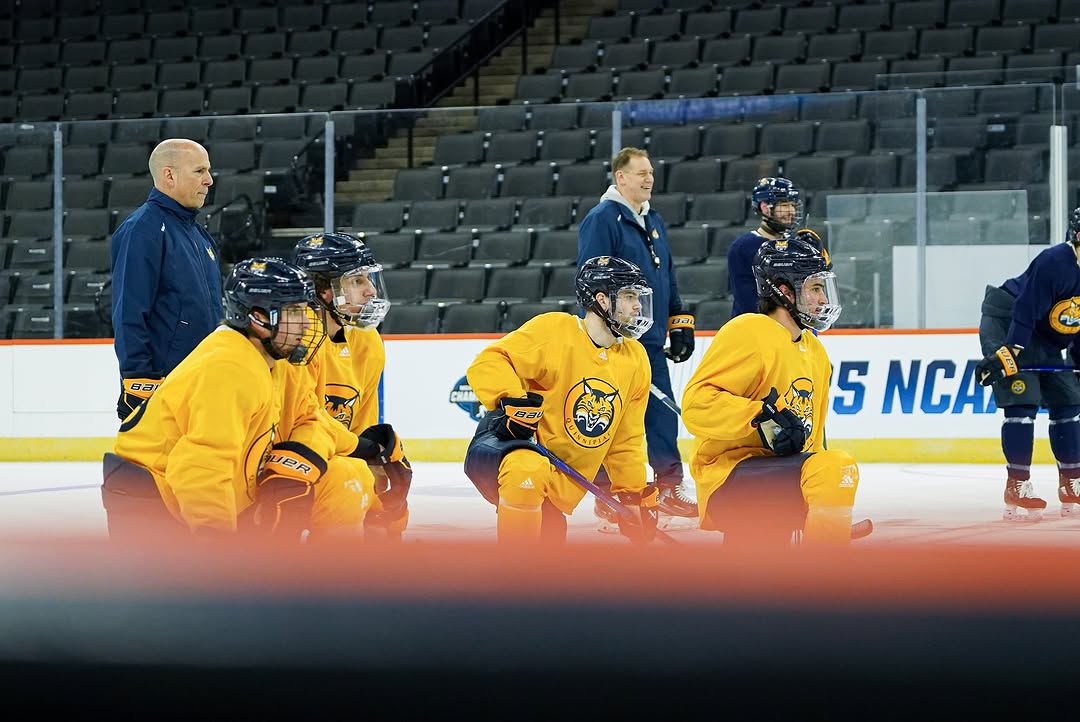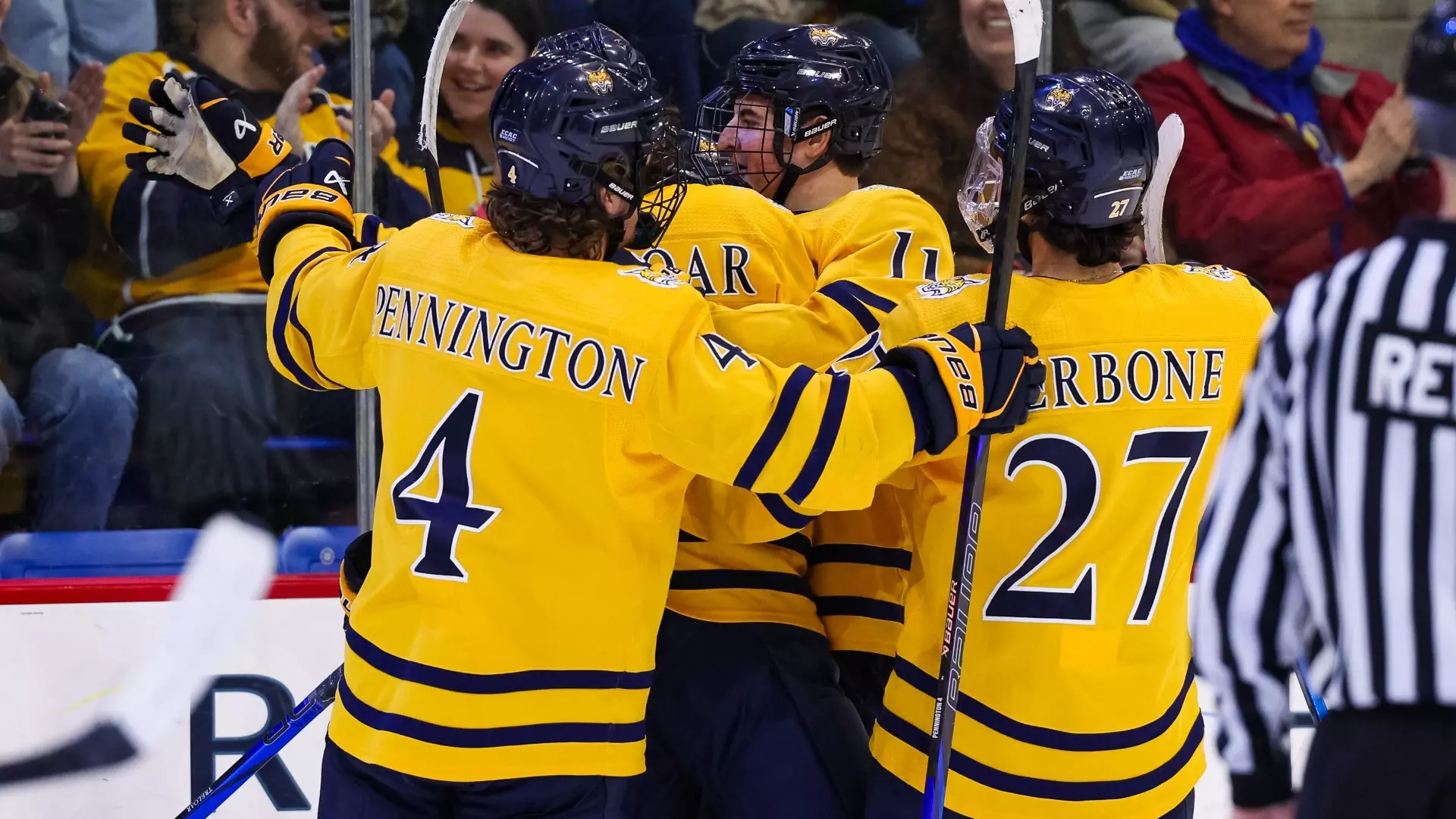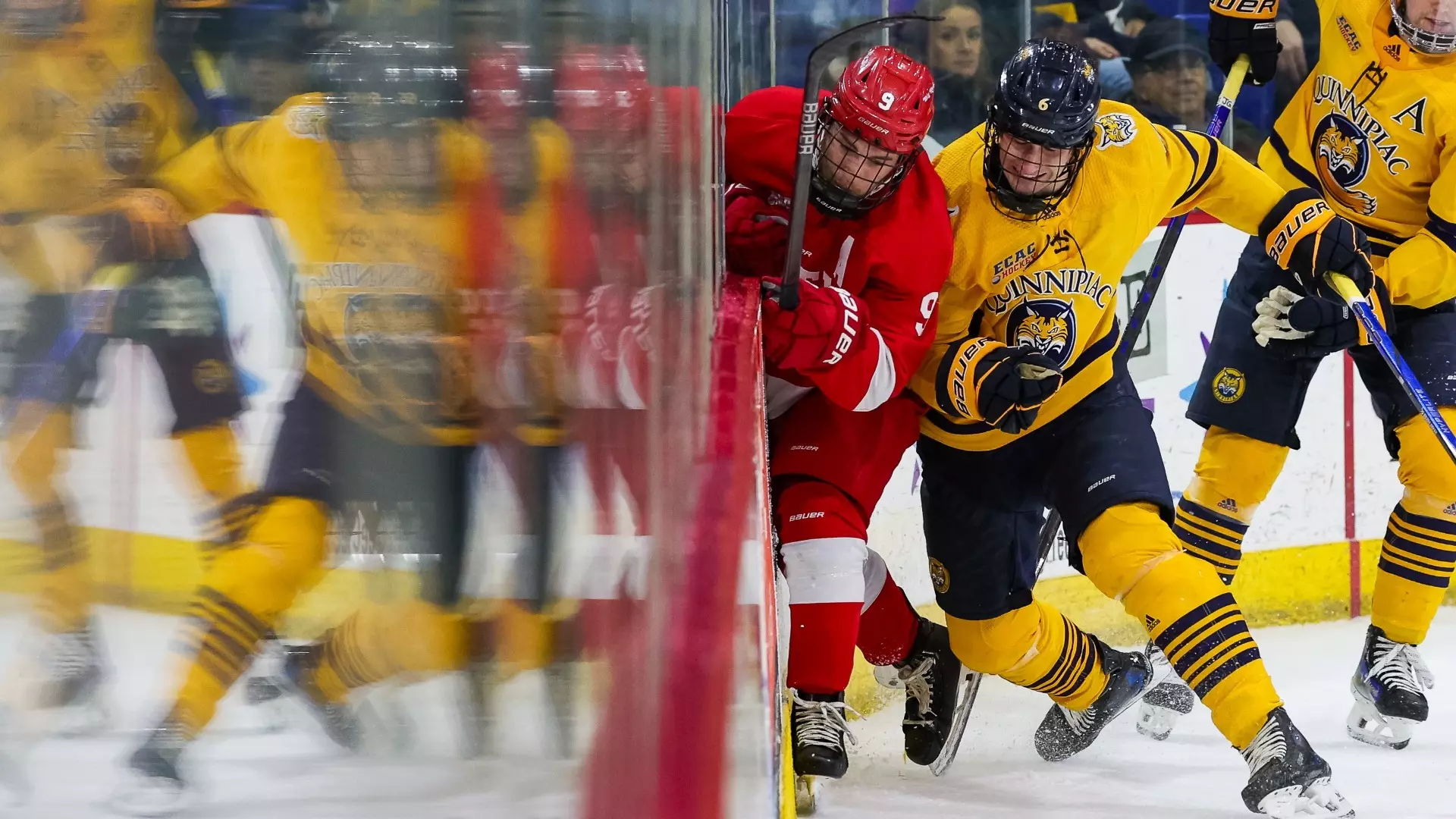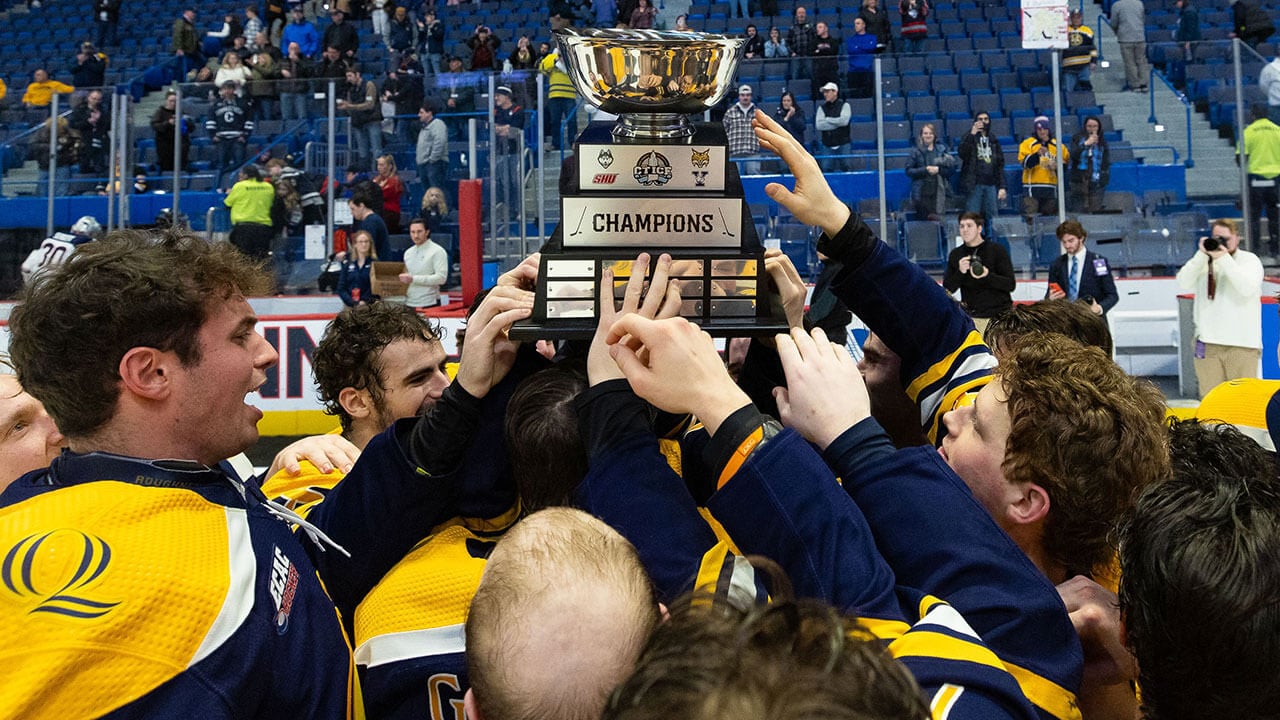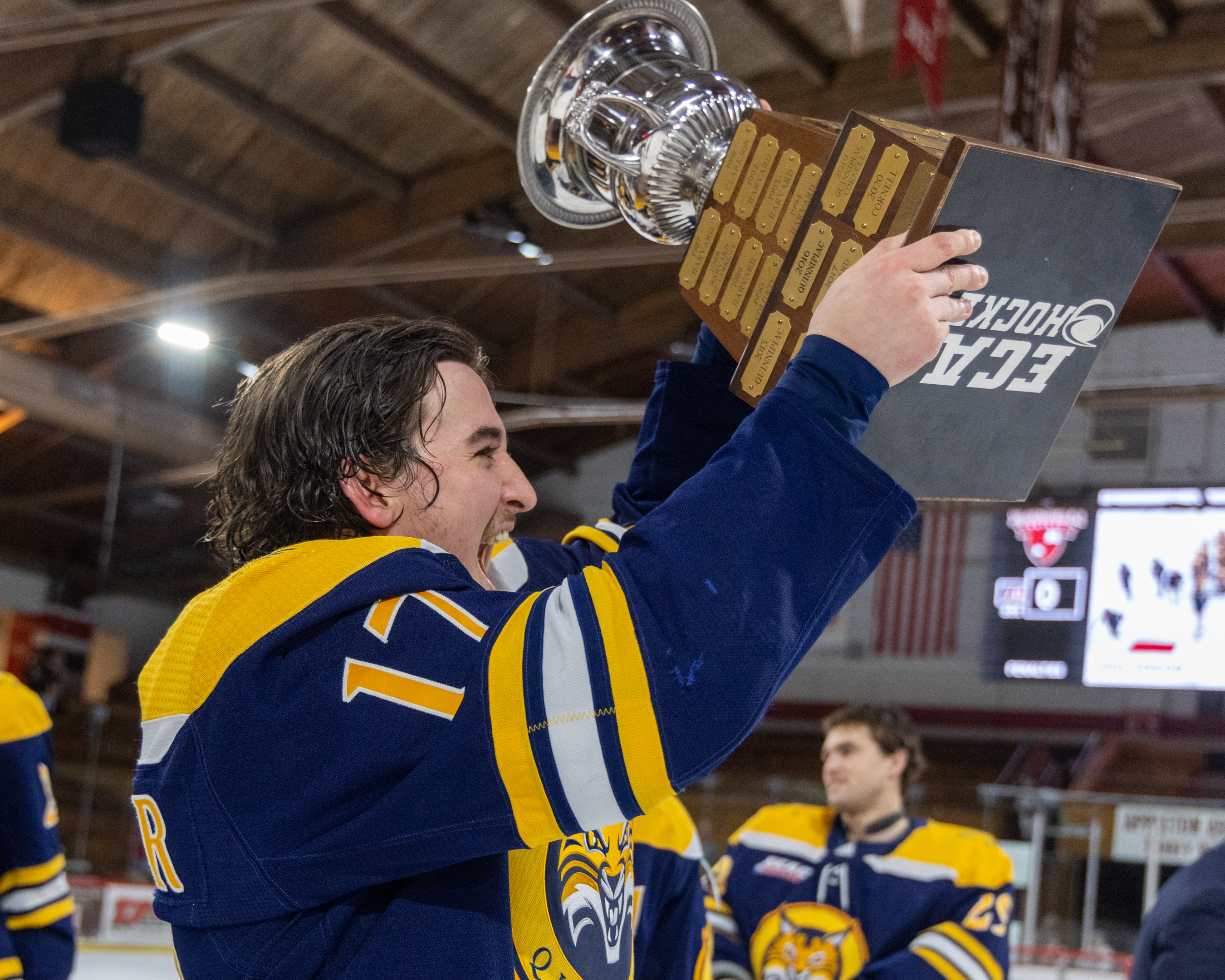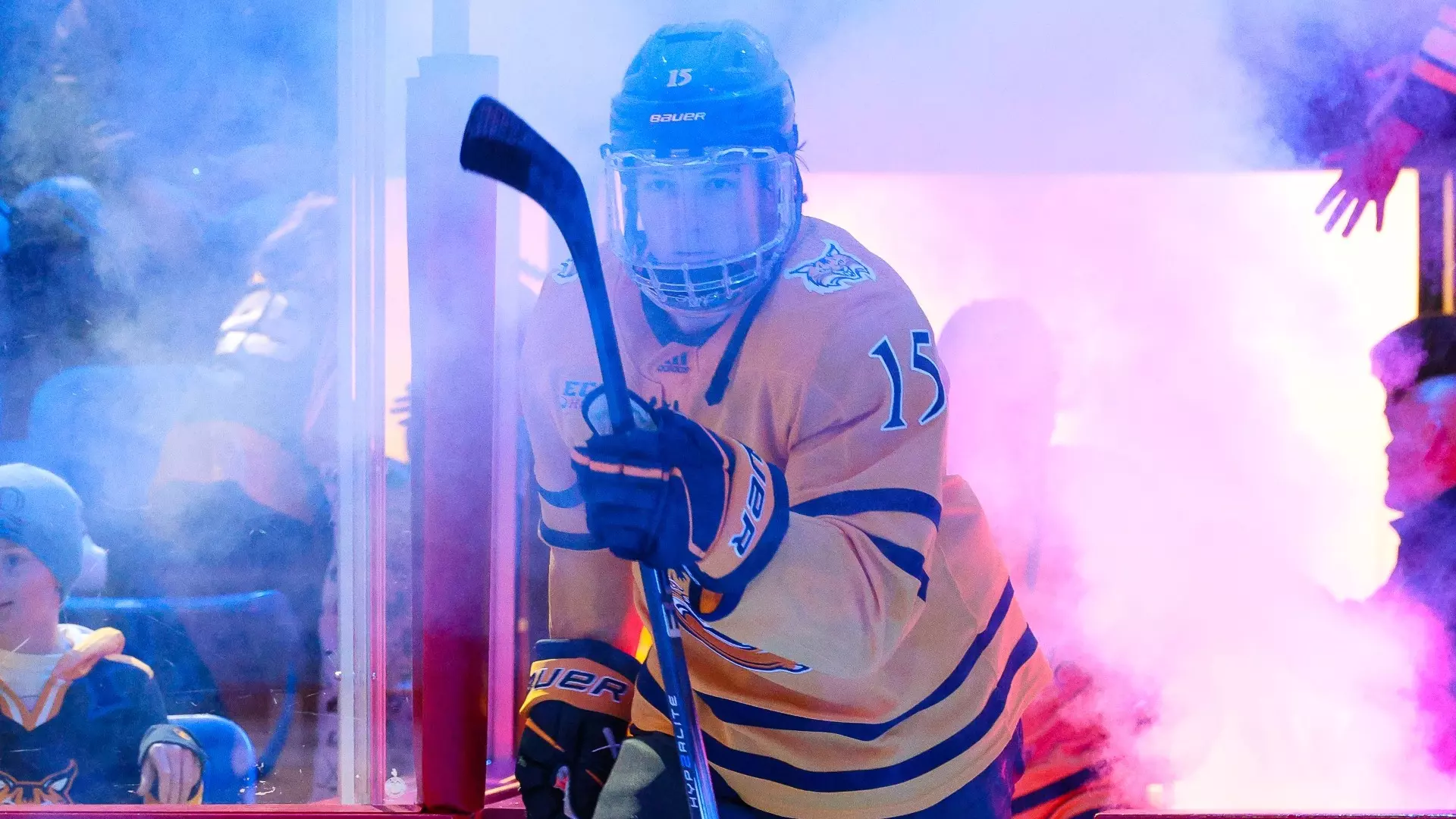By: Brandon Murdock and Tyler Platz
Following an underwhelming season, the young Bobcats failed to reach the regional finals of the NCAA Tournament for the first time since the 2020-21 season. QU Sports Page’s Brandon Murdock and Tyler Platz took a look at who the team will bring back and where it can improve for next season.
Key Returners
Forwards
Jeremy Wilmer, Sr.
15 goals – 25 assists – 40 points
Wilmer led the team and came second in the ECAC in points in his first season in Hamden after transferring over from Boston University. He continued his success in the postseason with a pair of goals in four games. He will be someone the Bobcats lean on to lead the scoring next season.
Mason Marcellus, Jr.
10 goals – 28 assists – 38 points
Marcellus has been a prominent force on offense for the Bobcats since arriving on the scene last season, leading the team in total points since his collegiate debut. While struggling in the goal scoring department this season, Marcellus remains an elite playmaker racking up 28 assists.
Andon Cerbone, Jr.
15 goals – 20 assists – 35 points
Cerbone finished top five in the ECAC in points with 35 this season and will look to improve on that total heading into next season. As one of the veteran forwards coming back, he will look to lead a young group to help revamp the team’s offense for next season.
Defensemen:
Charlie Leddy, Sr.
1 goal – 10 assists – 11 points
Prior to the Gilson transfer news, Leddy was penciled in to be the oldest upperclassmen on the blue line heading into next season. He made plenty of plays a year ago, racking up 11 assists on the season and will look to be an anchor in the defensive zone come October.
Elliott Groenewold, So.
4 goals – 8 assists – 12 points
The fourth round pick of the Boston Bruins had an impressive first season in Hamden playing alongside graduate defensemen Aaron Bohlinger. Groenewold led the returning d-core in points last season and will look to build on that offense and step up as a leader heading into next season.
Drew Hockley, So.
1 goal – 3 assists – 4 points
Hockley came to the team in January and didn’t miss a beat, playing in 23 games for the Bobcats. Head coach Rand Pecknold showed a lot of confidence in Hockley as he split time with defenseman Davis Pennington quarterbacking one of the top power plays in the country.
Goalies:
Matej Marinov, Jr.
12-3-0 1.75 GAA
Marinov played in 17 games this season and dominated in his time. It seemed like he took control of the net as heading into the NCAA tournament game against UConn, playing in all the postseason games, but Pecknold made the switch to Dylan Silverstein for the biggest game.
Dylan Silverstein, So
12-9-2 2.25 GAA
Silverstein played in the majority of the games this season and seemed like a clear No. 1 choice for the Bobcats this season. That was until the playoffs came and Marinov took over. While the numbers impressed, there were moments that Silverstein looked over his head in the bigger games.
The Bobcats will bring back 11 forwards, including three of their top-four point scorers. They will also be bringing back four of their defensemen from a year ago on top of both of their goalies.
Despite the early postseason exit, the team still see’s the season as a success.
“A great year for us,” Pecknold said following the UConn loss. “I thought this would be a rebuild or a reload year, but we were better.”
Despite the optimism, there is still work to be done for next season.
Where they need help
From the forward group, the Bobcats will lose their third highest point getter in Travis Treloar (36), as well as their top goal scorer in Jack Ricketts (20). Either through the transfer portal or the incoming freshman class, the team, which was sixth in the nation this past season in goals per game with 3.55, will need to replace a combined 36 goals and 63 points of offense between the two graduating forwards. For that, they will also look to lean on other returning players such as rising sophomores Chris Pelosi, Tyler Borgula and Aaron Schwartz.
For defense, the team will lose a lot of experience in the form of Aaron Bohlinger, Davis Pennington and Cooper Moore moving on, either to graduation or the pros. They have already started making moves in that area with the addition of former RPI junior defenseman Will Gilson out of the transfer portal. Don’t be surprised when Pecknold dips back in to add another experienced blue liner to his young position group.
In two games for RPI against the Bobcats this season, a 6-2 and 3-1 pair of Bobcats wins, Gilson was a bright spot, racking two blocked shots and three shots on goal.
In net, the team may need to find a new netminder to compete. It would not come as a surprise to see one of the two current goalies enter the portal at some point, given the irregularity of playing time throughout the season.For now, while both are on the roster, it is important to make a firm decision on who is No. 1. This would allow for them to know their particular role as either the starter or the back up and for whomever is picked to build confidence heading into the season.
New leadership core
Quinnipiac’s leadership will also have a different look next season with all four captains leaving. The next group of Bobcats needs to step up and set the tone for what will be a new team in 2025-26.
Expect Marcellus to be named team captain, with senior forwards Wilmer and Victor Czerneckianair likely wearing the ‘A’ as alternate captains up front. To round out the group, Leddy on defense could also serve as an alternate captain.
Marcellus finished second on the team in scoring with 38 points. Already leading on the scoresheet, his voice carries weight. Part of the Bobcats’ identity next season could come down to what he’s learned from the now-departed upperclassmen.
“I’ve learned kind of something different from every single one of them,” Marcellus said after Quinnipiac’s NCAA Tournament loss. “They all kind of have their different ways of leading, whether they had a letter or not.”
Marcellus’ role on this team has the potential to extend beyond putting points on the board, as he could be heading into his biggest season yet.
With plenty of losses on the back end, the Bobcats will need leadership in that area. On defense, Leddy will be one of the only remaining seniors on defense who is an in-house name. With experience playing both at Boston College and Quinnipiac, Leddy has a leadership position carved out for him.
He’ll be tasked with leading younger defensemen such as sophomores Groenewold and Hockley in the upcoming season. Leddy’s steady presence could help keep this team’s defensive core in the long run, even after he’s graduated.
Common themes of struggle
In 2024-25, the Bobcats dropped six of their first nine games to open the season. However, they managed to dig out of that hole, eventually reaching the ECAC semifinals and the first round of the NCAA tournament, thanks to an at-large bid.
It was promising to see Quinnipiac recover over the course of the season, but improving its start in the early months of the season will be critical for a return to the playoffs in 2025-26. No team avoids roster turnover, and having a slow start with a new team could be detrimental to the Bobcats’ season and derail them from finding a groove as the season moves along.
A strong start for a team that will have several new faces could be pivotal in building chemistry.
Situational hockey, particularly in the waning moments of a game, carries the utmost importance. Yet for the Bobcats, managing these instances was a sporadic challenge recurring over the course of this past season.
In an Oct. 19 game against Maine, Quinnipiac led 5-4 in the third period. With just under 30 seconds left in the game, the Bobcats allowed the Black Bears’ junior defenseman Brandon Holt to score, tying the game at five and sending the game into overtime. The collapse was complete just four minutes into the extra period, with senior defenseman David Breazeale netting the game-winner.
Chalk this letdown up to early season struggles, but Quinnipiac experienced a similar letdown in the postseason. In the ECAC playoff semifinals against Cornell, the Bobcats positioned themselves to advance, holding a 2-1 lead in the third period after a goal from freshman forward Chris Pelosi with five minutes remaining.
In the final two minutes of regulation, senior forward Kyler Kovich buried a shorthanded goal, knotting the game at 2-2. Quinnipiac once again squandered its third-period lead when senior defenseman Tim Rego sealed the game 3-2.
Breakdowns like these, five months apart nonetheless, were troubling for Quinnipiac. The new roster next season needs to focus on improving late-game performances or, at the very least, learn from these past struggles early in the season.
The Bobcats have their work cut out for them based on their confirmed non-conference opponents in 2025-26. They’ll open the season in October at the Ice Breaker tournament, hosted by Arizona State, where they’ll face a competitive bracket that includes ASU, Alaska and Notre Dame.
In January, Quinnipiac will look to avenge this season’s loss in the CT Ice tournament. The Bobcats will once again be joined by Sacred Heart, Yale and UConn — the same UConn team that ended Quinnipiac’s NCAA tournament run in the first round.
Their non-conference schedule isn’t getting any easier, so how well Quinnipiac can adjust during this off-season could make or break the season ahead.

